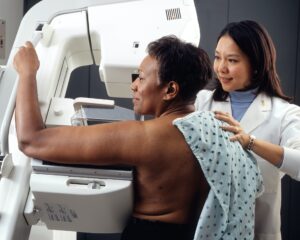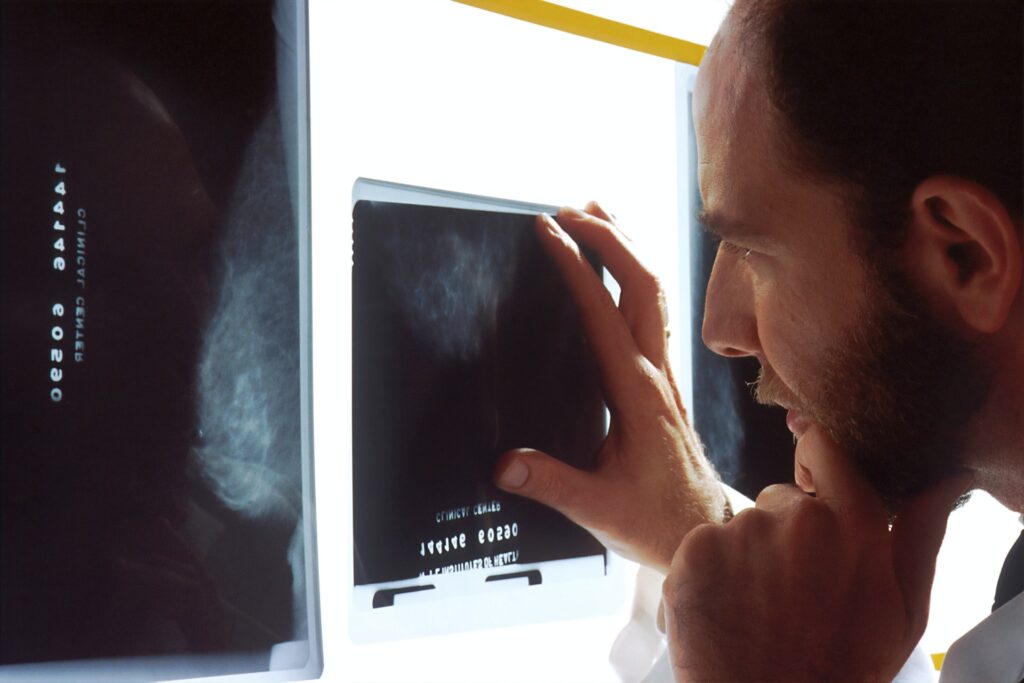Breasts come in all varying shapes and sizes, but did you know that they are made of different types of tissue? I’m sharing this information for you to be better equipped to make the best possible decisions for your breast health.
Breasts are made up of glandular, fibrous and fatty tissues. According to the CDC,
- “Fibrous tissue holds the breast tissue in place.
-
Glandular tissue is the part of the breast that makes milk, called the lobes. The tubes that carry milk to the nipples are called ducts. Together, fibrous and glandular tissue are called fibroglandular tissue.
-
Fatty tissue fills the space between the fibrous tissue, lobes, and ducts. It gives the breasts their size and shape.”
What is Breast Density
Breast density has to do with how much fibrous and glandular tissue is made up in the breast. The more dense the breast, the least amount of fat it carries. You cannot do a self check or even have a doctor do a physical breast check to know if you have dense breast tissue because the only way to find out if you have dense breasts is by Mammogram testing.
 A mammogram is a specialised medical procedure used to show the inside of the breast. Radiologists use an X-ray system to help detect and diagnose breast diseases so you have a better chance of dealing or solving the problem as soon as possible. Click here to find out the best ways to prepare for a Mammogram.
A mammogram is a specialised medical procedure used to show the inside of the breast. Radiologists use an X-ray system to help detect and diagnose breast diseases so you have a better chance of dealing or solving the problem as soon as possible. Click here to find out the best ways to prepare for a Mammogram.
Density can be broken up into four (4) categories:
- Almost all fatty tissue
- Scattered glandular and fibrous tissue
- Heterogeneous Tissue (lots of glandular and fibrous tissue)
- Extremely Dense (almost all glandular and fibrous tissue, no fat)
Dense breasts can cause some mammograms to read incorrectly, as all tumors or other diseases show up as solid white areas on the X-ray, along with dense breast tissue. Women who have dense breasts are often called back for follow-up exams and other procedures to clarify any matters that were not detected.
Unfortunately, ladies with dense breasts are at a higher risk of breast cancer because of the lack of interpretation.
Breast Size
The size of your breasts has nothing to do with how dense they are. Kelly Myers M.D says your age, genetics, family history, medical conditions or medications, weight gain and that change of life women hate to talk about menopause, all have an impact of your breast density. Now women can stop thinking that smaller breasts you don’t have dense tissue, and large breasts do, as you can now see that is not true.
Ladies, if you come across any change in how your breasts look or feel or you get any pain in your upper back, please seek medical advice as soon as possible. Getting yearly mammograms is also important, especially if you have dense breasts. Early detection is the best way to combat any type of breast disease or change we may feel or see. Let us not neglect our ‘girls’ any longer!



Very good blog! Do you have any recommendations for
aspiring writers? I’m planning to start my own blog soon but I’m
a little lost on everything. Would you recommend starting with a free platform like WordPress or go for a paid option? There are so
many choices out there that I’m totally confused ..
Any ideas? Many thanks!